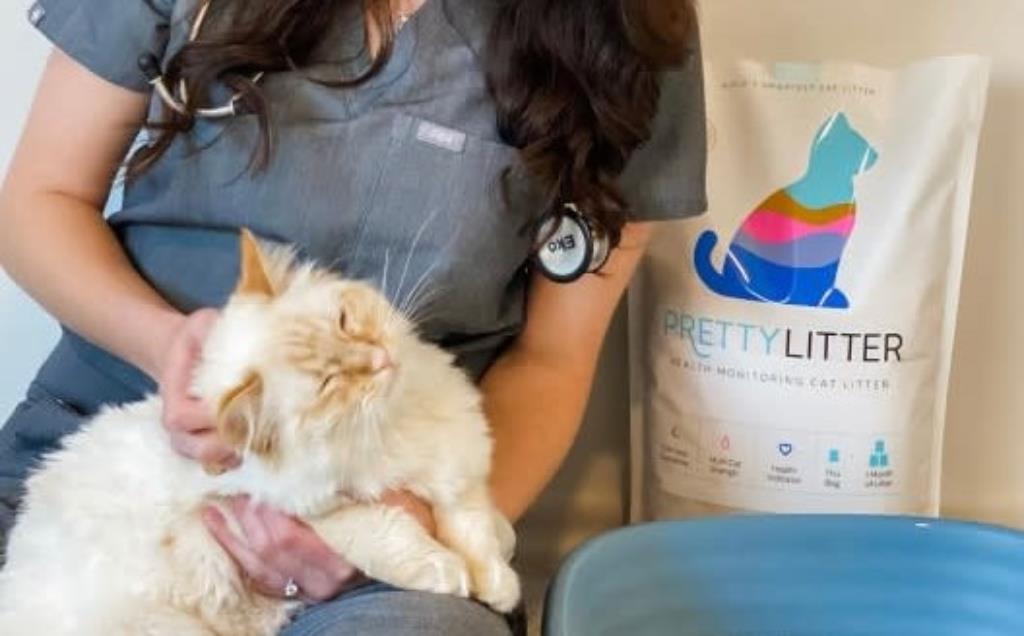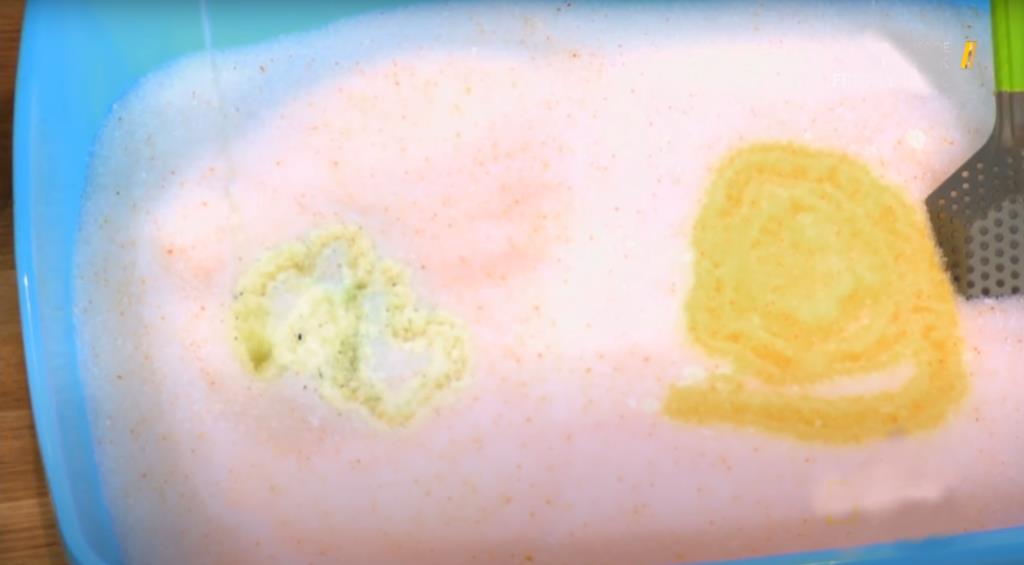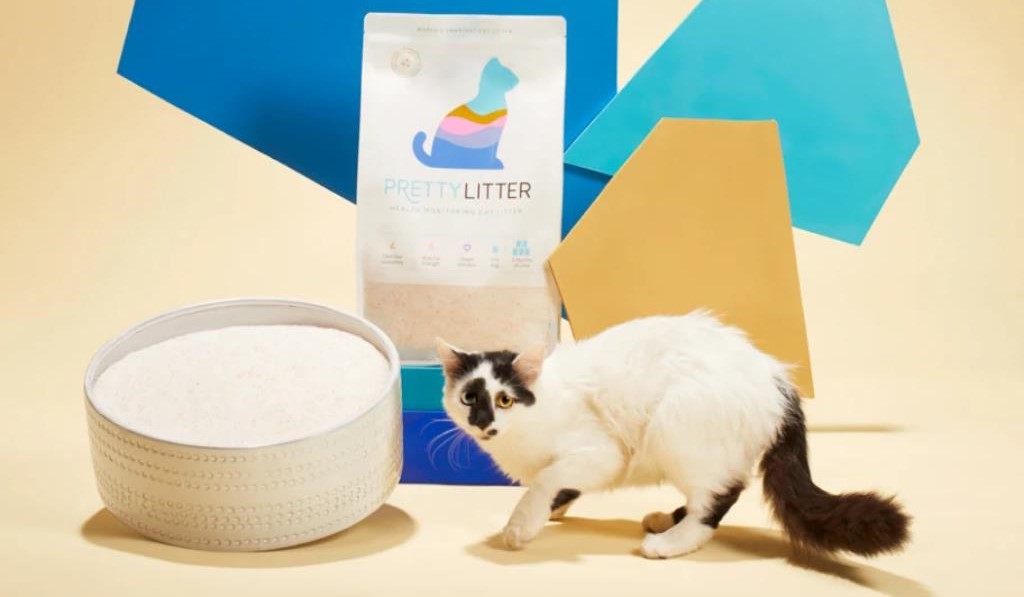When it comes to our beloved feline companions, their health and well-being are of paramount importance. Enter PrettyLitter, an innovative cat litter that has captured the attention of cat owners with its unique feature: the ability to change color. This color-changing characteristic isn’t just a visual curiosity; it holds the potential to offer valuable insights into a cat’s health. In this article, we’ll delve into the intriguing question: Does PrettyLitter change color over time, and what does it mean for our cats?
Understanding the Mechanism
PrettyLitter’s color-changing magic is not based on sorcery, but rather on the principles of science. The litter is designed to monitor changes in a cat’s urine pH, which can be indicative of potential health issues. The base color of PrettyLitter is typically blue, serving as a reference point. When a cat urinates on the litter, chemical reactions occur that cause the litter to shift in color based on the pH levels of the urine.
What the Colors Indicate
PrettyLitter’s unique ability to change color based on a cat’s urinary pH levels is more than just a visual novelty. The color changes serve as valuable clues about your cat’s health, offering insights into potential issues that might need attention. Let’s delve into what different colors in PrettyLitter can indicate and how they relate to your cat’s well-being.
1. Blue:
- Significance: The base color of PrettyLitter is typically blue.
- What It Indicates: The blue color signifies a balanced and healthy urinary pH level in your cat. When the litter remains blue after use, it suggests that your cat’s urine pH is within the normal and optimal range.
2. Green:
- Significance: A shift from blue to green in PrettyLitter.
- What It Indicates: A green color change might indicate a slightly elevated pH level in your cat’s urine. While not an immediate cause for alarm, it could be an early warning sign of changes in diet, stress, or other factors affecting urinary pH.
3. Orange:
- Significance: A shift from blue to orange in PrettyLitter.
- What It Indicates: An orange color change suggests a higher pH level in your cat’s urine. This could be an indicator of potential urinary tract issues, such as infections or imbalances. It’s advisable to monitor your cat closely and consult a veterinarian if the color change persists.
4. Red:
- Significance: A shift from blue to red in PrettyLitter.
- What It Indicates: While rare, a red color change could indicate the presence of blood in your cat’s urine. This is a serious concern and requires immediate attention from a veterinarian. Blood in urine can be a symptom of various underlying health conditions.
5. Brown/Yellow:
- Significance: A shift from blue to brown or yellow in PrettyLitter.
- What It Indicates: Brown or yellow color changes could suggest issues related to dehydration or concentrated urine. While not as alarming as red, it’s still worth observing your cat’s hydration levels and consulting a veterinarian if necessary.
6. Monitoring and Action:
- Observation: Regularly checking PrettyLitter for color changes is a proactive way to monitor your cat’s health.
- Action: If you notice consistent or significant color changes, it’s advisable to observe your cat’s behavior, litter box habits, and overall well-being. Consulting a veterinarian can help determine the underlying cause and appropriate steps to take.
In summary, the different colors that PrettyLitter can change to serve as indicators of your cat’s urinary pH levels and potential health concerns. While blue signifies a balanced pH, other colors like green, orange, and red offer insights into changes that might need attention. Remember that while color changes are important clues, they’re not diagnostic. Professional veterinary care remains crucial for accurate assessment and treatment of your cat’s health.

Time and Color Changes
The question of whether PrettyLitter changes color over time hinges on a variety of factors. The color change is a reaction to the pH levels of the cat’s urine, so the frequency and degree of color shifts depend on individual factors such as the cat’s diet, hydration, and overall health. It’s possible to witness color changes in real-time after a cat uses the litter, but these changes might not be visible for every instance of urination.
The Importance of Monitoring
PrettyLitter’s color-changing feature is not a replacement for professional veterinary care; rather, it’s a complementary tool. Regular monitoring of the litter box, along with observing your cat’s behavior, eating habits, and litter box habits, is crucial for a holistic understanding of their health.
How Does PrettyLitter’s Color Change Work?
PrettyLitter’s color change is a result of a chemical reaction that occurs when the litter comes into contact with a cat’s urine. This innovative feature is designed to provide insights into the cat’s health by monitoring changes in urine pH levels. Here’s how PrettyLitter’s color change works:
1. pH-Responsive Crystals: PrettyLitter is made with special pH-responsive crystals that are capable of undergoing color changes based on the acidity or alkalinity of the surrounding environment.
2. Contact with Urine: When a cat urinates in the litter box, the urine comes into contact with the pH-responsive crystals in the litter. This triggers a chemical reaction between the urine and the crystals.
3. pH-Level Influence: The pH level of a cat’s urine is influenced by various factors, including their diet, hydration, and overall health. A cat with balanced health will typically have urine within a certain pH range, resulting in a specific color change in the litter.
4. Color Change Indicator: Depending on the pH level of the urine, the pH-responsive crystals in PrettyLitter will change color. The resulting color provides a visual indication of the cat’s urine pH and, potentially, their health status.
5. Interpretation: Cat owners can observe the color change in the litter and use it as an indicator of potential health issues. Different colors may correspond to different pH levels, which can help identify imbalances or abnormalities in the cat’s urinary system.
6. Monitoring Health: The color change in PrettyLitter serves as a tool for early detection. If the litter changes to a color that is outside of the normal range, it might signal the need for closer monitoring of the cat’s behavior and consultation with a veterinarian if necessary.
7. Complementary Tool: It’s important to note that PrettyLitter’s color change is not a definitive diagnostic tool but rather a complementary method for cat owners to monitor their cat’s health. Professional veterinary care is essential for accurate diagnoses and appropriate treatments.
In summary, PrettyLitter’s color change works through a chemical reaction between the pH-responsive crystals in the litter and a cat’s urine. This unique feature allows cat owners to visually assess potential changes in their cat’s urinary pH levels, offering early insights into their health and well-being.
What Does the Base Color of PrettyLitter Signify?

The base color of PrettyLitter is typically blue, and it serves as a reference point for understanding the cat’s urinary pH levels. The blue color of PrettyLitter holds specific significance, as it represents a balanced and healthy pH level in a cat’s urine.
When a cat urinates on PrettyLitter, the pH-responsive crystals in the litter react to the urine’s acidity or alkalinity. This reaction can cause the litter to change color from its base blue hue. However, if the litter remains blue, it suggests that the cat’s urine pH is within a normal and optimal range.
In essence, the blue base color of PrettyLitter provides reassurance that the cat’s urinary system is in good health. When the litter remains blue after use, it indicates that the cat’s urine is not displaying extreme acidity or alkalinity, which could potentially be linked to urinary tract issues.
While the blue color signifies a balanced pH level, it’s important to remember that PrettyLitter’s color changes beyond blue can also provide valuable insights into potential health concerns. Colors like green, orange, or red might indicate varying pH levels and could prompt cat owners to pay closer attention to their cat’s behavior and seek veterinary advice if needed.
In conclusion, the blue base color of PrettyLitter acts as a normal reference point, representing a balanced and healthy urinary pH level. This color provides cat owners with peace of mind when the litter remains blue, indicating that their feline friend’s urinary health is within the expected range.
Frequently Asked Questions (FAQ)
Does PrettyLitter Really Change Color Over Time?
Yes, PrettyLitter does indeed change color over time. The color change is a response to the pH levels of a cat’s urine, indicating potential shifts in their health.
How Often Will I See Color Changes in PrettyLitter?
The frequency of color changes in PrettyLitter varies based on factors such as the cat’s diet, hydration, and overall health. Color changes might not occur with every instance of urination.
Is PrettyLitter’s Color Change a Substitute for Veterinary Care?
No, PrettyLitter’s color change is not a substitute for professional veterinary care. While it can offer insights, it’s essential to consult a veterinarian for accurate diagnoses and treatments.
What Should I Do If I Notice Significant Color Changes?
If you notice significant or persistent color changes in PrettyLitter, it’s advisable to consult a veterinarian. They can help determine the underlying cause and provide appropriate guidance for your cat’s health.
Remember that while PrettyLitter’s color-changing feature is a valuable tool for monitoring your cat’s health, it’s only one aspect of a comprehensive care routine. Regular veterinary visits, observing your cat’s behavior, and maintaining a healthy diet are equally important for ensuring your feline friend’s well-being.
Conclusion:
In conclusion, yes, PrettyLitter does change color over time, responding to changes in a cat’s urine pH. This unique characteristic has the potential to provide early insights into your cat’s health. However, it’s important to remember that color changes are just indicators, not diagnoses. If you notice significant or persistent color changes, consulting a veterinarian is recommended to ensure your feline friend’s well-being. PrettyLitter’s color-changing capability is a testament to the marriage of innovation and pet care, helping cat owners take a more proactive role in their pet’s health journey.



